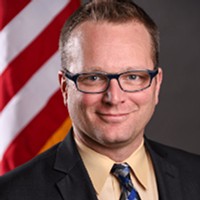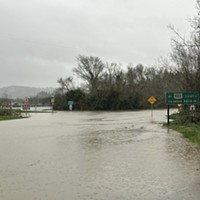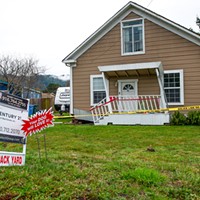[
{
"name": "Top Stories Video Pair",
"insertPoint": "7",
"component": "17087298",
"parentWrapperClass": "fdn-ads-inline-content-block",
"requiredCountToDisplay": "1"
}
]
Imagine police are responding to a report of a man with a gun. Three officers pull up to find the man standing on a sidewalk. They all exit their patrol cars, raise their firearms, holding the man at gunpoint, and simultaneously begin shouting orders.
"Hands up!" says one.
"Get down on the ground," yells another.
"Drop the weapon," shouts the third.
If you ask any expert in police procedure, this is a nightmare scenario — one that exponentially raises the chances of an officer-involved shooting as the suspect can't comply with any one officer's orders without disregarding those of the other two. What you want in these situations is a singular voice giving a clear set of instructions.
The same principles hold for emergency responses in general, which makes what we witnessed late last month with PG&E's Public Safety Power Shutoffs in Humboldt County incredibly troubling. A primary function of any office of emergency services response is the dissemination of clear, accurate information — making sure residents are getting one clear message about what to expect and how to prepare. There's no escaping the fact that what we witnessed locally surrounding the Oct. 26 blackout and the one that threatened to follow Oct. 29 was a failed emergency communications effort. And this failure increases the risks associated with these blackouts, as they make it harder for people to prepare, whether that's deciding whether to shutter a business or how many days' worth of medical supplies to keep on hand.
First off, we saw local elected officials and administrators essentially go rogue and offer their own messaging about what residents should expect, sometimes depending on back channels of information and unofficial sources. While far from alone, most notable among these voices was Humboldt County First District Supervisor Rex Bohn, because both his role as board chair and his stature in the community give him a hefty megaphone. Bohn told the Times-Standard on Oct. 25 that "his sources" indicated the shutdown would begin at 7 p.m. the following day and "only last until Monday." At the same time, the county Office of Emergency Services, the division actually trained in orchestrating responses to local emergencies, was warning residents to prepare to lose power early in the afternoon and to be without for up to four days. The weather event spurring the blackout was forecast to end Monday, Oct. 28, OES reported, while warning that once the weather subsided PG&E would have to inspect all its lines and repair any damage before restoring power.
OES' message was calculated and conservative, aimed at ensuring residents were prepared for the worst. Bohn's was optimistic, based on a weather forecast and a best-case scenario, and had the potential to leave people unprepared.
This type of rogue messaging is reckless. While we certainly understand the desire to keep residents informed — and the ego boost that can come with an accurate prediction — we also recognize that OES staff are the trained professionals. They are the ones equipped to figure out the best message to get out to local residents to keep us all as safe as possible and the rest of us need to follow their lead.
But they are also only as good as the information they receive and, in the case of these blackouts, it's coming from a for-profit corporation that's seemingly overwhelmed by the task of providing accurate, real-time local information to each of the dozens of counties impacted by its decisions. We recognize that PG&E is responding to dynamic weather events but it also seems the company is weighing liability exposure and parsing words. Perhaps most troubling, there's a growing pile of evidence to indicate the company — or at least those higher ups making decisions and dictating the flow of information — doesn't have a complete understanding of how its power grid works in Humboldt County.
That appears to be why Humboldt County could be told it should expect fewer than 2,200 customers in outlying areas to be shut down to be told only hours later that the entire county would go dark when there were no underlying changes in weather or fire risk forecasts. And there's simply no acceptable explanation for why PG&E provided inaccurate information directly to the county about the forecast shutdown on Oct. 29, which left OES and the company's media representatives giving starkly different warnings of what locals should expect over the course of more than 12 hours.
Mad River Community Hospital reports that it treated 15 patients during the recent shutdown for blackout-related ailments. It's fair to wonder whether some of those could have been prevented with better information and messaging.
The uncomfortable truth here is that we are all at PG&E's whim. The company will decide who loses power and when, as well as what OES knows about it in advance. OES and county officials should be irate about how PG&E has handled information about these blackouts to date, and every indication is that they are.
The lives of our most vulnerable residents and the health of the world's fifth largest economy rest largely in the hands of corporate employees answerable primarily to shareholders. That's a dynamic we as a community need to work toward changing, which will almost assuredly demand compromise and sacrifice.
But in the meantime, let's all start by listening to OES, or at the very least by refraining from shouting over them.
Thadeus Greenson is the Journal's news editor. He prefers he/him pronouns and can be reached at 442-1400, extension 321, or [email protected]. Follow him on Twitter @thadeusgreenson.
Speaking of...
Comments
Showing 1-1 of 1
more from the author
-
Seeking Salvation
'Living in amends,' a candidate for resentencing hopes for another chance
- Apr 18, 2024
-
UPDATE: Artillery Shell Deemed Safe in Ferndale
- Apr 12, 2024
-
Turning the Titanic
Cal Poly Humboldt recognized for leadership in addressing global plastics crisis
- Apr 11, 2024
- More »





































